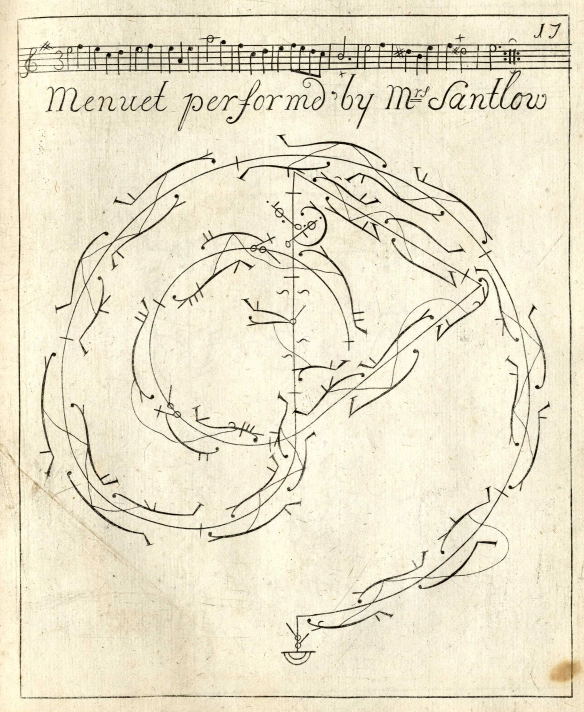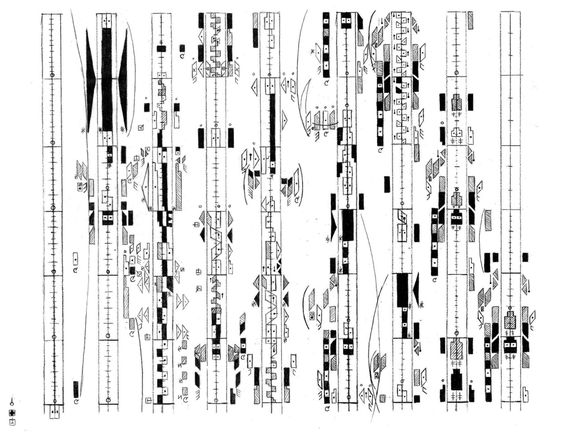There are many things in life that I’m not proficient at. One is learning languages. Another is dance. So, you can imagine how interesting this past week has been. (Sidenote: I’m aware it’s been well over a week. This post has been in my drafts for so long, guys, I’m sorry. Every time I thought I was ready to publish, I found out something new!)
First off, I’d like to say that I have become deeply fond of every individual who has ever come up with a dance notation system. Because that means at several points throughout history, someone has sat down to watch a ballet; a long and complex performance with multiple dancers and changes of music and style, and at the end of it, said: “somehow, I have to write that down.” As a librarian-in-training and a balletomane, I resonate with that. I’m the person who saves every ticket stub and cast sheet I ever get into a scrapbook. Those are my people.
The idea of recording physical movement through notation has been taken up by many dancers and dance researchers throughout history. European dance notation is generally agreed to have started with Pierre Beauchamp-Feuillet’s system of recording Baroque dance, and was commissioned by Louis XIV. Dance notation then evolved through various forms and off-shoots devised by choreographers and dancers with different needs. The most popular form of notation used by choreographers in the ballet world today is Benesh notation, which was created by Joan and Rudolf Benesh in the 1950’s. Joan herself was a dancer with the Sadler’s Wells Royal Ballet: her husband Rudolf was a mathematician and artist. It proved to be a well-matched partnership as they combined their twin passions and expertise to create a new language for dance. Benesh notation is used today to both record new works for the future and to learn choreography from previous productions.
Without embarking on a long, comprehensive review of the history of dance notation, I’ve included a short summary of four types of dance notation that each made a significant impact on the documentation of dance. Later I’ll talk about dance notation computer systems, photography and video, scrapbooking, and mime. And also hopefully Stravinsky, at some point.
- Beauchamp-Feuillet
Beauchamp’s notation was described in detail for the first time by Raoul-Auger Feuillet in his 1700 work, Choréographie. It was used commonly throughout Europe in the eighteenth century. While several systems of dance notation were developed in 17th century France before this one, Beauchamp’s technique became the most widely used and popular way of recording new dances. Beauchamp’s notation is also arguably the most pleasing to look at, if not the easiest to follow.

The semicircle at the start of the spiral has two lines within it, which denotes that these are steps for female dancers. The main line of the spiral is the spatial line, which shows the path the dancers must take on the stage. Short, straight lines across the spatial path denote the music’s measure marks and show where the dancer should be by the time each measure is up. The actual steps are shown through the thicker, curved lines which follow the spatial path. (Admittedly, I still can’t quite decipher how these work well enough to describe them here, so for anyone who is really interested, here’s a useful link: http://www.baroquedance.com/research/dancenotation.htm#symbols)
- Stepanov
Vladimir Ivanovich Stepanov was the first person to create a dance notation system based on anatomical analysis of human movement. He explained this system thoroughly in his 1892 work, Alphabet Des Mouvements Du Corps Humain: Essai D’enregistrement Des Mouvements Du Corps Humain Au Moyen Des Signes Musicaux. (Alphabet of Human Body Movements: An Essay on the Recording of Human Body Movements by means of Musical Signs). The Stepanov system looked a lot like musical notation, as can be seen below:

The Stepanov system is especially significant because it was used to make the first ballet scores of some of the most-loved ballets; brought together in what is called ‘the Sergeyev Collection’. Although this collection of famous Russian ballets were (mostly) composed by Marius Petipa and recorded by Stepanov, the collection is named after Nicholas Sergeyev; régisseur of the St. Petersburg Imperial Theatres, who brought the collection out of Russia after the Russian Revolution of 1917. While not every score in the collection is complete, it stands as a hugely important historical source and is now kept in the Harvard University Library theatre collection. The works in the Sergeyev Collection include Giselle, The Sleeping Beauty, The Nutcracker, Coppélia, and Swan Lake: so where on earth would we be without it?
3. Labanotation
“PRESERVING THE PAST,
>ENRICHING THE PRESENT,
>SECURING THE FUTURE”
(Motto of the Dance Notation Bureau)
Rudolf Laban devised this notation system in 1928 and developed it through the 30’s. Labanotation is the system of choice for the Dance Notation Bureau, set up in New York City in 1940 with the intention of preserving choreographic works. As well as keeping scores in labanotation, the bureau also collects programmes, video tapes/files, and photographs. (You can imagine how badly I want to visit.) It’s important to note that Labanotation was devised to record any kind of human movement, such as ice skating and swimming, not especially ballet or dance. This website provides a fascinating account of how it works, because I’ll be frank, readers: I don’t understand a single symbol of it. I do think it’s beautiful, though, and it’s even inspired designers!

4. Benesh
Okay, this is the big one. As I wrote earlier, Benesh notation was developed by Joan and Rudolf Benesh in the 1950’s. According to the Benesh Institute website, Benesh notation is used for;
- choreographers to protect their copyright and as a reference for work-in-progress
- dancers to learn their roles directly or through a notator
- dance students to improve movement vocabulary and observation skills
- dance teachers to read dances from the repertoire, plan classes, record choreography and study exercises in the RAD’s examination syllabi
- dance scholars for academic research
- dance stagers who teach from a ‘text’ designed in a succinct and analysed form
- dance notators (also known as Benesh Choreologists) within dance companies
- the RAD to communicate with our multi-lingual members
- dance companies to record and maintain repertoire works
- opera and musical industry to record choreography for rehearsals and re-staging
- film and TV industry to plan and record movement content
- anthropologists as an analytical tool, and
- clinicians and physiotherapists to analyse patients’ movement, gait and posture.
https://www.rad.org.uk/study/Benesh
Benesh is the notation system of choice for most choreographers and ballet archivists today, and the single notation system for the Royal Academy of Dance, (whose library I am hoping to visit soon!)

As you can see, much like the Stepanov system, Benesh looks a lot like music notation. It work with the music stave much more fluidly than the other systems, in my opinion, and it will be the Benesh system that I’ll be looking at most when it comes to The Rite of Spring.
In reading week I have two appointments booked; one for the V&A Performance and Collection archives, where I’ll be looking at everything and anything they have on the original 1913 TROS production, and the other for the English National Ballet’s archives, where I will be a kid in a candy shop looking at anything I’m allowed to see. I can’t wait! My next posts will be write-ups of those visits, as well as a look at programmes and other forms of ballet-related documents and how those are collected and kept.
Here’s your video for this week; Yasmine Naghdi and Matthew Ball rehearsing for The Sleeping Beauty, which I’m going to see this coming Thursday. It’ll be my first TSB and I’m ridiculously excited – it just looks so pretty!
Links used:
https://www.britannica.com/topic/labanotation
http://dancenotation.org/lnbasics/frame0.html
http://user.uni-frankfurt.de/~griesbec/LABANE.HTML
http://the-history-girls.blogspot.co.uk/2013/04/when-words-are-not-enough-by-hm-castor.html
https://www.rad.org.uk/study/Benesh/how-benesh-movement-notation-works

